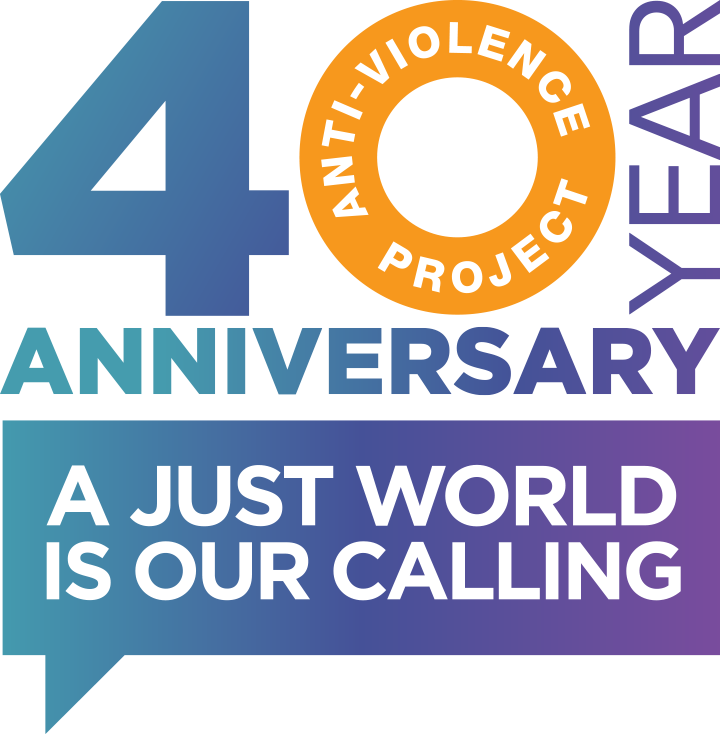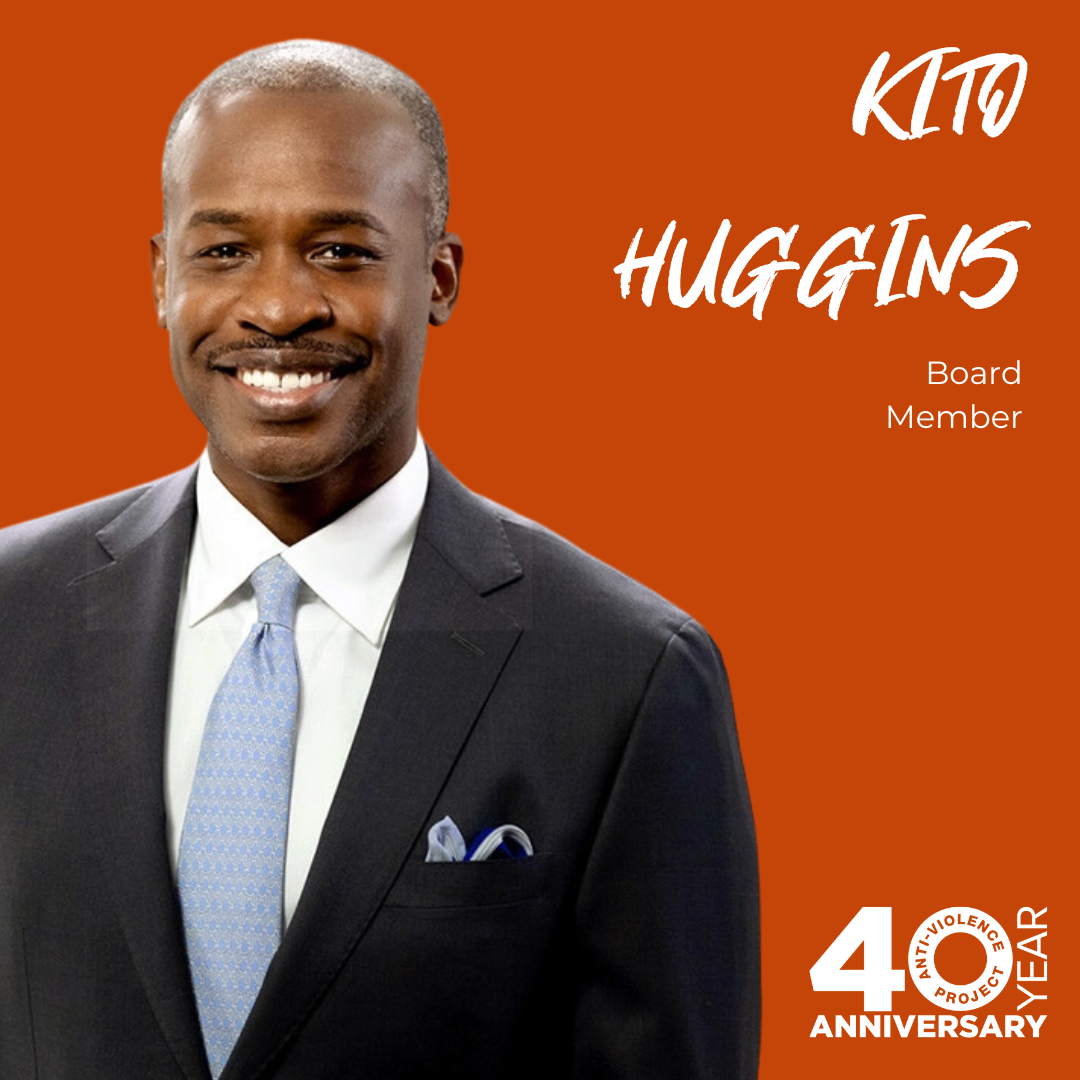
This interview has been shortened and condensed for clarity.
When there were no formalized LGTBQ+ domestic or intimate partner violence (IPV) services in New York City or the State, as Domestic Violence (DV) Program Coordinator, and later as the Director of Client Services at AVP, Diane Dolan-Soto, LCSW, provided representation for the LGTBQ+ community and collaboratively worked to make formal and lasting changes.
When did you first start working with AVP?
I started with AVP in 1998 three years after finishing my Master’s in Social Work. I worked for two years before that on a joint program with the Jewish Board of Family and Children’s Services and Gay Men’s Health Crisis to facilitate a support group for gay and straight HIV+ parents in conjunction with a group for their HIV negative children. Michael Schernoff, a professor at Hunter College, a gay man, and a supporter of AVP knew of this and my DV work and thought it would be good for me to interview for the DV Coordinator position. What got me in the door was knowing, if I was hired, I’d be able to advocate for LGTBQ+ people and hopefully make needed changes.
What inspired you to engage us and our work?
AVP is an example of the successful underdog. AVP started as a grassroots community response to bias attacks and the lack of police response. Out of those efforts AVP became an agency for real change and they continue to do this important work.
I used to go to a lot of protests, and I got really tired. My feet would hurt, and nothing else came of it. Protest is important, but protest doesn’t often work by itself. The activists that created AVP helped change policies and protocols in social justice and social service organizations across New York. AVP also helped spark the development of anti-violence organizations in other states.
As a survivor of multiple forms of abuse and violence, I want to thrive, not just survive, and I want to help others do the same in their lives. AVP was a place [where] I could be myself. It meant a lot to live as fully as myself as possible. At that time, it wasn’t every place that being a lesbian wasn’t a big deal.
Can you talk a bit about your time at AVP and what you accomplished?
Through AVP, I built rapport and alliances that led to the development of policy changes and formal services for LGTBQ+ victims and survivors. I was the only state level representative for LGTB DV victims when the HIV Partner Notification Law was passed without any language on how to provide notification in cases of DV. I helped allies understand the unique and similar needs of LGTBQ+ or any survivor of IPV. I developed the first LGTBQ+ IPV training for mainstream domestic violence service and shelter providers, and trained agencies across the city. I formalized an annual LGTB DV statistical report for NYC that introduced LGTBQ+ survivors’ needs and challenges and helped providers and funders make policy changes to integrate formal services for LGTBQ+ survivors in mainstream settings. Building on this, I collaborated with the New York State Office for the Prevention of Domestic Violence, to develop the first ever state level LGTB Domestic Violence Training, formalizing training for statewide DV service providers. I created a screening tool to distinguish victims from abusers in same sex relationships. I collaborated with the only provider for LGTB services for IPV abusers, Seeking Non-Violent Alternatives Program (SNAP), to help limit or avoid abusers going on to abuse new partners in the community. I collaborated with the NYC Human Resource Agency, the city’s funder for IPV services, to co-create the first formalized training on cis, gay and trans male IPV victims. A lot of this work I did with the wonderful clinical support of Linda Arkin, LCSW, an expert in domestic violence services, and a long-term AVP supporter.
After the 9/11 attacks I was appointed on behalf of AVP and the National Coalition of Anti-Violence Programs (NCAVP) to screen and provide services and benefits to LGTBQ+ people whose partners were killed in the attacks, when mainstream agencies refused to serve LGTBQ+ surviving partners.
I’m really proud of the many changes being at AVP helped me to make and be a part of.
What were some of your biggest challenges at AVP?
Coming up against bias directly and seeing the impact of bias and the devastating impact of hate crimes on others.
In a lot of my direct work for AVP, the biggest challenge was often being let in the door or given a seat at the table. Two weeks after I started at AVP I had to give a talk at a town hall meeting about NYS’ impending HIV Partner Notification Law. There was no wording under the DV section and the potential for a lot of risk to people of all gender identities and sexual orientations. For two years I worked on committees to build awareness and understanding, and to cultivate access with the NYS Department of Health and Human Service and AIDs Institute to even be included at the table for final decision making. When the draft wording came out, LGBTQ+ people were represented. One of the leaders of the AIDS Institute reached out to tell me personally that of the almost 300 organizations that sent comments and criticism, AVP was the only organization that made recommendations of what to change, and almost every recommendation we made was included in the final wording of the bill!
Through those obstacles, what kept you going?
I had really good role models, Richard Haymes, Clarence Patton, Bea Hanson who had served at AVP before I worked there, and many others. Being at AVP, you can’t help but be motivated. Everything at AVP is about your own life and the life of your community. The impact of bias and hate crimes was really hard. I think the thing that prevents people from getting really depressed with the hard work at AVP is the sense of purpose and the comradery.
Why do you continue to do what you do?
When people experience trauma, they often feel there’s something wrong with them. And if there hadn’t been great people who helped me, I wouldn’t be where I am. As someone very wise once told me, trauma is often about “having normal responses to really abnormal circumstances.” The mental health system a lot of times can contribute to making people feel crazy, and that’s wrong. When the work is done right, it’s about healing and making people feel grounded and solid in themselves. And that’s the most important thing to me.




